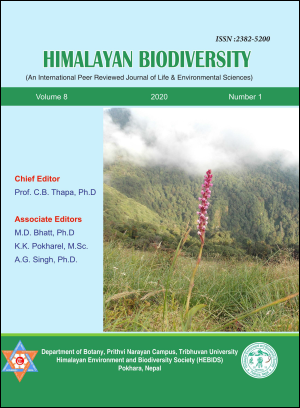Disaster Management and Role of Academic Institutions in Nepal: Current Status and Way Forward
DOI:
https://doi.org/10.3126/hebids.v8i1.40238Keywords:
Academia, DRRM, TU, PU, EHD, PHEDAbstract
The intense natural disasters have been causing the great loss of life and properties in Nepal. This study attempts to figure out the status and role of Nepalese academia for the contribution of disaster risk reduction and management (DRRM). The methodology adopted for the study is reviewing the literature, policies, and academic documents including university curricula. The study highlighted that the constitution of Nepal 2015 and DRRM Act 2017 have provided ample opportunities via several legal provisions for federal, provincial, and local government to make their own modalities for making a disaster-resilient society. The universities and higher academic institutions are responsible for sound knowledge-based research activities to address the issues of DRRM which could be directly adopted by different levels of governments in terms of their plans, policies, and programs. In this connection, attempts are being made by governments and academic institutions to develop disaster resilient communities by shifting the traditional way of just responding during disaster focusing on the disaster cycle. Precisely, ten major universities of Nepal have incorporated disaster components including preparedness, response, recovery, and mitigation-related academic curricula in their undergraduate and graduate levels academic programs. Introducing the Environmental Health in Disaster, and Public Health and Disaster Engineering in Tribhuvan University and Pokhara University, respectively is one of the good initiatives taken by the academia. However, there is still room for improvement in terms of the integration of DRRM courses in the curricula of higher academic institutions for making disaster-resilient communities.
Downloads
Downloads
Published
How to Cite
Issue
Section
License
© Himalayan Environment and Biodiversity Society (HEBIDS)

